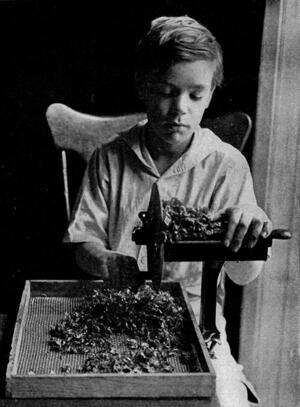How Poverty Became a Women’s Issue
Fifty years ago, President Lyndon Johnson declared a War on Poverty, a government response to a national poverty rate around 19%. Back then, the face of poverty in the States was those living in inner-city projects or Appalachian shacks. Today the face of poverty is women.
According to Maria Shriver (on the Atlantic), of the more 100 million Americans living close to or under the poverty line, nearly 70% are women and children. Forget having it all; these women just want to be able to feed their kids and pay their electric bill.
Women are more likely to find themselves struggling to get by these days because they earn less and are increasingly the sole or primary source of income in their households. Right now, women make up nearly two-thirds of minimum-wage workers in the country, and the median earnings of women who work full-time are 77% of what their male counterparts make. The wage gap is largely due to penalties women pay for being parents.
The Women’s Movement, which was sparked, in no small part, by the publication of Betty Friedan’s The Feminine Mystique only one year before Johnson’s “War,” has come a long way in shattering glass ceilings. But amidst all this pushing women to the top, might have we forgotten the women at the bottom? Really, what good is a female senator or CEO when so many women are struggling just to make ends meet?
Over the past 50 years, women have gained the right to birth control and abortions, to work in a sexual-harassment-free environment, and even to play sports and buy homes. But there is one area where the women’s movement has largely failed to help women, and that is in managing family life. The United States offers families little to no economic support following the birth of a child or illness of a loved one. Also, we pay some of the highest prices in the world for a childcare system that is largely unregulated and sometimes dangerous.
The organization Save the Children recently put out a “State of the World’s Mothers” report in which they ranked the United States 30th, far behind most other countries in the developed world.
No wonder, then, that so many of these women in poverty say that their life would improve if we had more policies supporting family life. Things like sick days and family leave would go a long way toward helping the working poor avoid financial ruin due to the birth of a child or an illness in the family. Then there are the many women who can’t work because they have nowhere safe or affordable to leave their young children during the day. And right now, more than 70% of low-wage workers get no paid sick days at all.
Helping working parents is the next step in the fight towards both gender and income equality; we will never have either unless we make life more manageable for those in our society who dare to have a family and job.
The good news is that there is a lot of energy going into fix these things right now. Senators Kirsten Gillibrand (D-NY) and Representative Rosa DeLauro (D-CT) just introduced a Senate bill that would create a national paid family leave policy for mothers and fathers. And President Obama and New York Mayor Bill de Blasio have both put the importance of universal pre-K (which would help moms just as much as it would help kids) on the national radar. This is happening in the Jewish community too, as foundations and federations are reexamining their daycare and preschool policies and trying to figure out how to make these services more affordable for parents. There is reason to hope, but this doesn’t mean we don’t need to work to get there.
To get involved in the fight for better childcare and paid sick leave, check out MomsRising and Family Values at Work.






